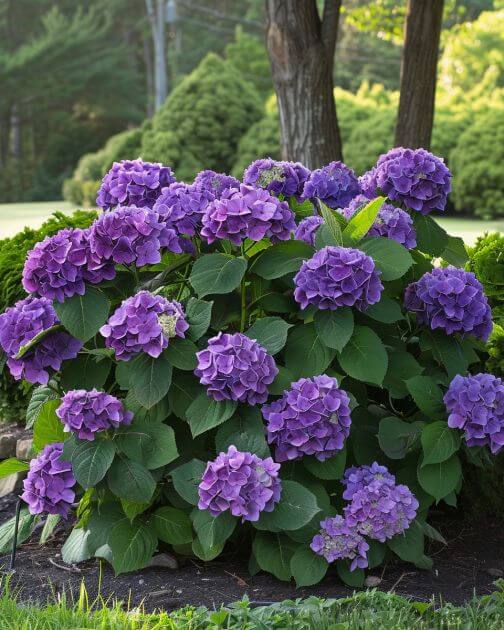For garden lovers, achieving lush, abundant hydrangea blooms is a true sign of gardening success. These stunning flowers are admired not just for their brilliant hues but also for their large, showy clusters that can turn any outdoor space into a breathtaking retreat.
If you want to ensure your hydrangeas flourish season after season, understanding the key factors behind their growth is essential. This guide will walk you through a reliable gardening technique that will not only enhance your hydrangea blooms in the upcoming season but also keep them thriving for years.
The Role of Soil pH and Aluminum in Hydrangea Growth
1. Test Your Soil’s pH
Hydrangeas grow best in soil that ranges from slightly acidic to neutral. Checking your soil’s pH is essential, as it affects the plant’s ability to absorb nutrients. The ideal range for most hydrangea varieties is between 5.2 and 5.5.
2. Adjust the pH as Needed
If your soil’s pH falls outside the ideal range, consider making adjustments. To increase acidity, use elemental sulfur or aluminum sulfate. If the soil is too acidic and needs to be neutralized, adding garden lime can help.
3. Boost Aluminum Absorption
For hydrangeas with blue-toned blooms, such as bigleaf hydrangeas, aluminum is a crucial element. If your soil lacks sufficient aluminum or the pH is too high for absorption, adding aluminum sulfate can help enhance the intensity of blue shades in your flowers.

Watering and Fertilization for Healthier Blooms
4. Maintain a Consistent Watering Routine
Keeping the soil evenly moist is key, particularly in dry weather. Hydrangeas require a good amount of water, but overwatering should be avoided to prevent root rot.
5. Use the Right Fertilizer
Opt for a fertilizer that is rich in phosphorus to support flower production rather than excessive foliage growth. Apply fertilizer in early spring when new growth begins, and again before mid-summer to sustain blooming throughout the season.
Pruning: The Secret to Long-Term Blooming
6. Know Your Hydrangea’s Pruning Needs
Different types of hydrangeas require different pruning approaches. Some, such as bigleaf hydrangeas, develop blooms on old wood, meaning pruning should be done right after flowering rather than in late fall or early spring.
7. Remove Old and Dead Growth
Pruning should be minimal but strategic. Focus on removing dead or aging wood while also thinning out dense areas to improve airflow and sunlight penetration. This encourages healthier, more vigorous growth and better blooming.
Conclusion: How to Keep Your Hydrangeas Blooming Beautifully
Achieving full, long-lasting hydrangea blooms involves careful attention to key environmental factors. By optimizing soil conditions, maintaining proper watering and fertilization, and pruning wisely, you create the perfect environment for your hydrangeas to thrive. With dedication and care, your efforts will be rewarded with season after season of spectacular, envy-worthy blooms.